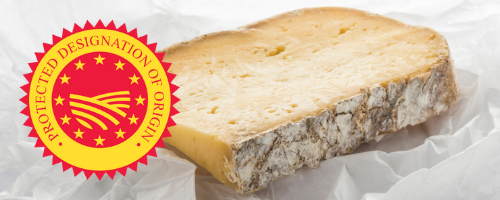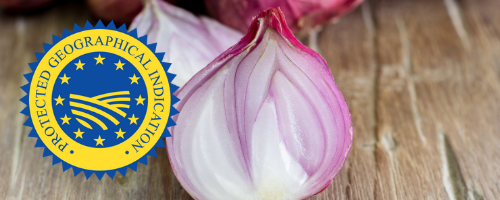Labels of Quality
How do European Quality Labels Answer Consumer Trends?
Are PGI asparagus similar to Georgia peaches? How does a PDO Comté cheese compare to a Kentucky whisky? What’s a Napolitan pizza to a New-York style one, and what does the organic EU label cover in comparison to the American one?
Listen to Jason Stemm from the Stemm Group and learn more about these quality labels, and how they can offer more appealing alternatives to customers.
Recognizing & Understanding Quality Labels
Because Europe is proud of its producers’ savoir faire and excellence, its visible designation system is designed to ensure products boasting European names were really made in Europe, following the recipes that made their success over the decades -or centuries. Read below to learn how to identify and differentiate these labels.

PDO – Protected Designation of Origin
The PDO label was created in 1992 by the European Union to replace all pre-existing country-specific labels. Its goal is both to highlight the quality of a food product that was made following a well-established technique within a defined geographical area, and to prevent companies that do not follow these guidelines from using the same name to sell their products. A PDO Bordeaux wine is produced exclusively in the Bordeaux area, from beginning to end. It gets its final taste both from its terroir (the type of mineral-rich soil where the vines were planted) and from the century-long methods that have traditionally been used in the area to produce wine.

PGI – Protected Geographical Indication
Created at the same time as the PDO label, the PGI seal guarantees that one or more production phases were localized in the designated area. A PGI product will be made entirely in the area where its ingredients were sourced, but could also include ingredients coming from a different area. As an example, French PGI Collioure anchovies are prepared in Collioure using traditional methods, but the anchovies might come from a different French area.

TSG – Traditional Specialty Guaranteed
This third label does not limit production to a specific geographic area but highlights the fact that a product was made following recognized, traditional methods, using a limited and recipe-specific list of ingredients. As an example, a Napolitan pizza can be offered in any Italian restaurant outside of Naples, as long as it bears the right ingredients and is baked in a specific type of oven. Only a few products bear this label in Europe at the moment, like Italian mozzarella, Spanish jamón Serrano or French moules de bouchot.

EU Organic
Designed to make organic products easier to identify, this label was created in 2002 with the same purpose: to unify all pre-existing, country-specific organic labels. In the process, the EU ensured that all countries would standardize their organic certifications following the same guidelines. As such, any product bearing a country-specific organic label (such as the French or German ones below) abides by the requirements of the EU certification. When applied directly on a prepackaged food product, the EU organic logo is followed by information about the origin of all raw materials used in the product and the code number of the control authorities.
